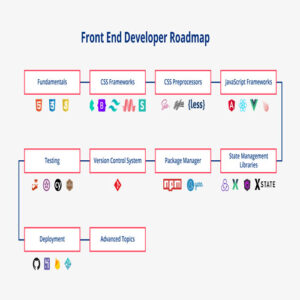The landscape of communication underwent a revolutionary transformation with the advent of Voice over Internet Protocol (VoIP). This technology, which allows voice communication over the internet, has become an integral part of our daily lives. To understand when VoIP became popular, we must delve into its origins, development, and the factors that contributed to its widespread adoption. when did the Evolution and Rise of VoIP become popular?
Rise of VoIP
The concept of transmitting voice-over data networks dates back to the 1970s when early experiments were conducted. However, it wasn’t until the late 1990s and early 2000s that VoIP began to gain traction and recognition.

In the early stages, VoIP faced numerous challenges, including limited bandwidth, unreliable internet connections, and concerns about voice quality. Despite these hurdles, visionaries in the technology sector recognized its potential to revolutionize communication.
The Turning Point: Late 1990s to Early 2000s
The late 1990s marked a turning point for VoIP as several key developments paved the way for its popularity. The growth of the internet, improvements in broadband connectivity, and advancements in voice compression algorithms played crucial roles in overcoming the initial obstacles.
One of the notable milestones during this period was the introduction of VocalTec’s Internet Phone in 1995. This software allowed users to make voice calls over the internet using a microphone and speakers connected to their computers. Although primitive by today’s standards, it laid the groundwork for the future of VoIP.
As internet infrastructure continued to improve, businesses and consumers alike began to explore the benefits of VoIP. The cost-effectiveness, flexibility, and additional features offered by VoIP services started to attract attention.
Business Adoption and Technological Advancements
The business sector played a significant role in the popularization of VoIP. As companies sought more cost-effective and scalable communication solutions, VoIP emerged as an attractive option. Enterprises began to implement VoIP systems to streamline communication, reduce costs, and enhance collaboration among employees.

Technological advancements further fueled the growth of VoIP. The development of Session Initiation Protocol (SIP) and the standardization of VoIP protocols contributed to interoperability between different systems and devices. This made it easier for users to communicate seamlessly across various platforms.
Consumer Adoption and the Rise of VoIP Providers
The early 2000s witnessed a surge in consumer adoption of VoIP services. Several standalone VoIP providers, such as Vonage, Skype, and MagicJack, emerged as pioneers in the consumer VoIP market. These providers offered affordable calling plans, international calling options, and additional features like voicemail and call waiting.
Skype, in particular, played a pivotal role in popularizing VoIP on a global scale. Its user-friendly interface, free peer-to-peer calling, and video conferencing capabilities attracted millions of users worldwide. Skype demonstrated that VoIP was not just a business solution but a communication tool accessible to everyone.
Mobile Integration and the Smartphone Era
The proliferation of smartphones in the late 2000s and early 2010s further accelerated the adoption of VoIP. Mobile apps like WhatsApp, Viber, and FaceTime allowed users to make voice and video calls over the internet using their mobile data or Wi-Fi connections. This shift marked a departure from traditional cellular networks for voice communication.
VoIP’s integration into mobile devices provided users with greater flexibility and cost savings. It also facilitated the rise of Unified Communications (UC), where voice, video, and messaging services converged into a single platform.
Challenges and Future Trends
While VoIP has become ubiquitous, it hasn’t been without challenges. Security concerns, regulatory issues, and the need for consistent internet connectivity have been areas of focus for improvement. Additionally, the emergence of new technologies, such as 5G and the ongoing development of Internet of Things (IoT) devices, presents both opportunities and challenges for the future of VoIP.
Looking ahead, the evolution of VoIP continues, with innovations such as Web Real-Time Communication (WebRTC) and artificial intelligence (AI) integration enhancing the user experience. Above all, As businesses and individuals seek more efficient and dynamic communication solutions, VoIP is poised to remain a central player in the evolving landscape of digital communication.
Conclusion
The popularity of VoIP represents a significant milestone in the history of communication technology. From its humble beginnings in the late 1990s to its current ubiquitous presence, VoIP has transformed the way we connect and communicate. In conclusion, The convergence of internet technology, mobile devices, and the innovation of VoIP providers has created a dynamic and interconnected communication ecosystem. As we move forward, the continued evolution of VoIP promises to shape the future of digital communication, offering new possibilities and redefining the way we stay connected in an ever-changing world.










